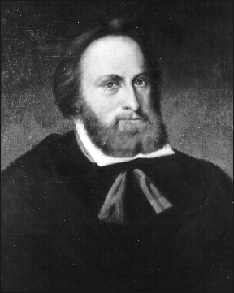
SAMUEL ARGALL, SEA CAPTAIN
The youngest of eight brothers, and a few sisters, Sam Argall was born about 1580 in Kent, England, the son of Richard Argall and Mary Scott. His father died when he was still of a tender age and his mother remarried within a few years. Her new husband was a Washington, the great uncle of the Lawrence Washington who moved to Virginia years later.
Samuel’s brothers started dying before he was an adult, and he became an heir with a yearly stipend. Soon he was a soldier in the Low Countries. And then became enamored of the sea and ships. By his mid-20s, he had a ship and was one of many captains making money in the fishing trade near Canada. In 1609, Captain Argall was in the employ of the Virginia Company of London as a ship’s captain. His assignment was two-fold, find a shorter route to Virginia and catch sturgeon, which were well known for their caviar. He did find a much faster route, sailing south to the Azores, due west to Bermuda and north north-west to the James River. He made his first trip in just over nine weeks, cutting the trip by a third.
A year later, 1610, Captain Argall saw Jamestown for the first time, bringing the Lord De La Ware from England to start his governorship. The place was a wreck. A large number of the Jamestown population had died in the “Starving Time”. The sixty or so residents left wanted to leave and were on their way to the Atlantic in ships when Argall’s ship hailed them. De La Ware insisted on all returning to the site of much suffering and the fresh people from the ship began to care for the sick and repair the fort. That fall, while the building was going on, Argall explored the Chesapeake and its tributaries. Unfortunately, by the following spring, the governor was so sick with malaria that Argall had to take him back to England.
Argall was sent back to Virginia when news came that French Catholic missionaries had moved into northern Virginia colony(now Maine). His assignment was to oust them. He crossed with his ship Treasurer in 1612. But first, before taking care of the French, he helped the new governor Dale with subduing the Indians. He went abroad, sailing into the Chesapeake, where he found friendlier natives, of the Patawomeck tribe. These people he could be on better terms with, trading for corn and other necessities. Thus, Argall developed a degree of diplomacy with the tribe and the chief, Iopassus. In 1613, he got Iopassus to help him kidnap Pocahantas. Despite the violence of such action, the result was a truce between the English and the Indians that lasted several years.
In mid 1613, Argall sailed his Treasurer along the coast up to Maine, where he found the missionaries and routed them, taking hostages. Then he sailed to Manhattan where he attacked the Dutch. By late in the year, he was back in Jamestown, where he stayed til the next summer.
He made the round trip to England, returning in February 1615. While in England, there were hearings regarding his attack on the French outposts. They determined that he acted correctly. Then he took Pocahantas and her husband, John Rolfe to England in 1616, returning with a saddened widower the next year.
This time, in 1617, Argall returned as a deputy governor, willing to follow the policies and discipline of the past two governors, Gates and Dale. Think of martial law. Many were not comfortable with him, even though he was not nearly as demanding a governor as the other two. Word got back to England that he was not acceptable and it appears that he heard word that he would be arrested when the new governor, George Yeardley landed. Two weeks or so before that, Argall left.
In England, he was questioned about his leadership and seemed to be in trouble for a while. Possibly to get out of that trouble, he manned a 24 gun ship in an expedition against Algiers. Showing his strengths and winning the questioning, Argall was knighted in 1622. He was also made a member of the Council of New England and was very faithful in his work. In 1624, he was nominated to the governorship of Virginia but was not elected. Then he was promoted to Admiral.
His last assignment was to participate in the poorly designed marine attack on Cadiz in the fall of 1625. He may have been wounded or sickened by the plague that was rampant among the sailors. In any case, he died in January 1626.
There is no record of his having ever married, but some say he left a daughter. Although she was not in his will, she supposedly inherited his land in Virginia.

Recent Comments